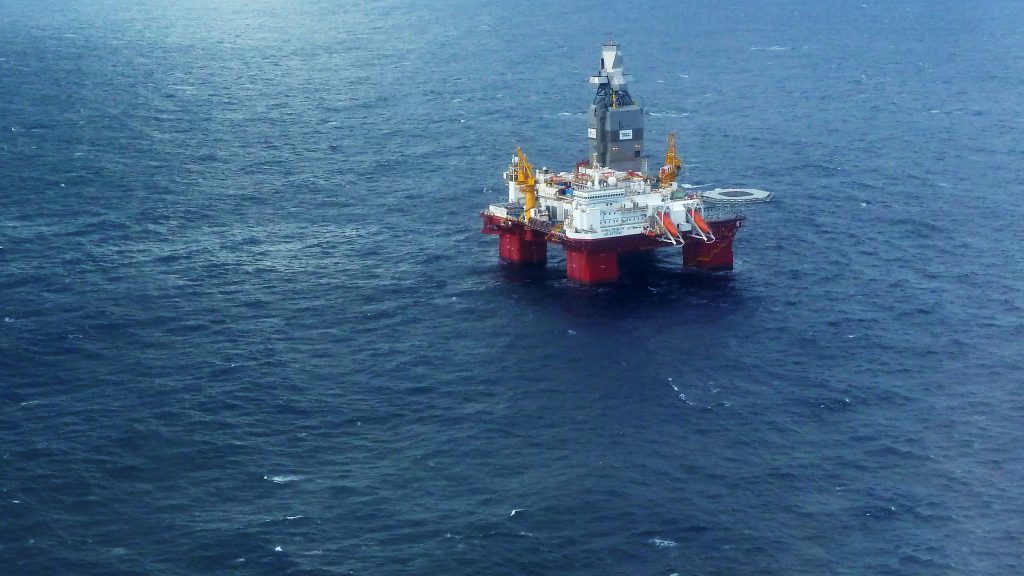
Westwood Global Energy reports that there was just one new well spud in the UK in November. The well is drilling in the Northern North Sea and brings the total number of new E&A well spuds to 20 in 2017. Four wells were active at the end of November, all close to, or operating at, total depth.
UK
West of Shetlands
Operations continued on exploration Well 206/9b-5 where BP is targeting the Cretaceous Achmelvich Prospect, close to the Clair Field, with the Paul B Loyd Junior (SS). At the end of November the rig was still on location. Meanwhile, Nexen continues to drill the long duration, deep Craster exploration Well 205/15-1 with the West Phoenix (SS), to the west of Clair, where it is evaluating prospectivity in the Mesozoic. The well is expected to complete before the end of the year.
Northern North Sea
In the Northern North Sea, Apache has now completed its appraisal of the Upper Jurassic Callater Field with Well 9/19b-22. The well was successful and is now expected to be tied in and start production in Q4 2017. The WilPhoenix (SS) rig moved to drill the operator’s Titan exploration well, 9/14b-16 which spudded on November 5. The well is targeting Eocene sand injectites to the east of the Beryl Field.
Central North Sea
There are currently no E&A wells drilling in the Central North Sea. The next well expected to spud will be on Apache’s Val d’Isere Prospect in Block 21/10, immediately north of the Forties Field, which will use the WilPhoenix rig once operations at Titan have been completed.
Southern North Sea
Wintershall is continuing operations with its 44/23g-15 appraisal well on the Winchelsea Discovery that was made in 2016. The well commenced on July 6 with the jack-up Maersk Resolve. Resources are estimated at 150 bcf in the Carboniferous, and the contract extension for the rig and the extended time on location are indicative of a positive result. A tie-back development via the operator’s nearby Wingate Field is envisaged if commercial volumes are proven.
Norway
Westwood Global Energy reports there has been one new exploration spud on the Norwegian Continental Shelf in November, with Well 6506/11-10 targeting the Hades and Iris prospects. The total number of E&A spuds therefore increases to 25, two less than at the same point in 2016. The completion of well 7219/12-2 S and its subsequent sidetrack 7219/12-2 A means that there was only one active well at the end of November.
North Sea
There was no activity in the North Sea in November. The last activity in the area was Aker BP’s appraisal Well 25/2-19 S on the Delta structure, which completed on September 10. Only nine wells have been drilled in the North Sea this year, compared to 20 wells drilled by the same stage in 2016 and significantly below the last five years’ average of 25 wells.
Norwegian Sea
Faroe announced on November 29 that it had commenced the drilling of Well 6506/11-10, utilising the Deepsea Bergen (SS).
The well is targeting the Hades and Iris prospects of Lower Cretaceous and Middle Jurassic age, respectively.
This is the fourth well to be drilled in the Norwegian Sea in 2017 and is likely to be the last, which would give a total that is half of the five-year average of eight wells a year.
Barents Sea
Lundin made a small gas discovery with the Hufsa Prospect Well 7219/12-2 S drilled using the Leiv Eiriksson (SS).
The well encountered a 22m (72ft) gas column in the Lower Jurassic Nordmela Formation, 20m (66ft) of which was in good to moderate reservoir quality and identified a GWC. The subsequent sidetrack well which commenced on November 8 encountered good reservoir quality, but water bearing sandstones in the Stø and Nordmela formations. The estimated resource size is c. 17 bcf (0.5 bcm) and the Hufsa Discovery is classified as non-commercial. The Leiv Eiriksson will commence drilling the nearby Hurri Prospect imminently.
Westwood does not expect a significant increase in activity for the remainder of 2017 and activity levels look likely to fall for a second year in a row. This decrease is particularly evident in the Norwegian Sea and North Sea, whereas the 12 wells seen in the Barents Sea already this year remains significantly above the five-year average of seven wells.
After the non-commercial discovery at Hufsa, the potentially commercial resources found in 2017 remains at c. 115 mmboe, a 59% decrease from 2016. Estimated resources for 2016 are now 278 mmboe following an increase of 29 mmboe at ENGIE’s 2016 Cara Discovery.
Recommended for you
